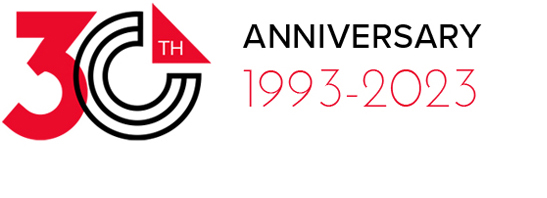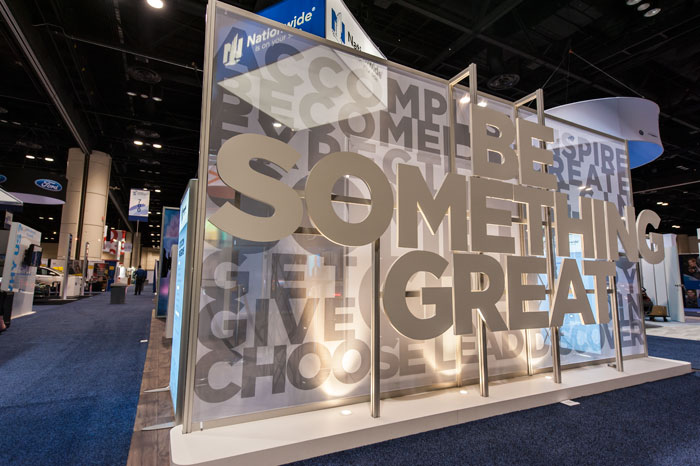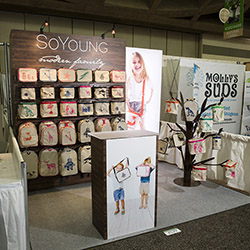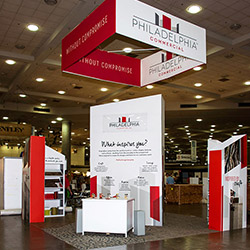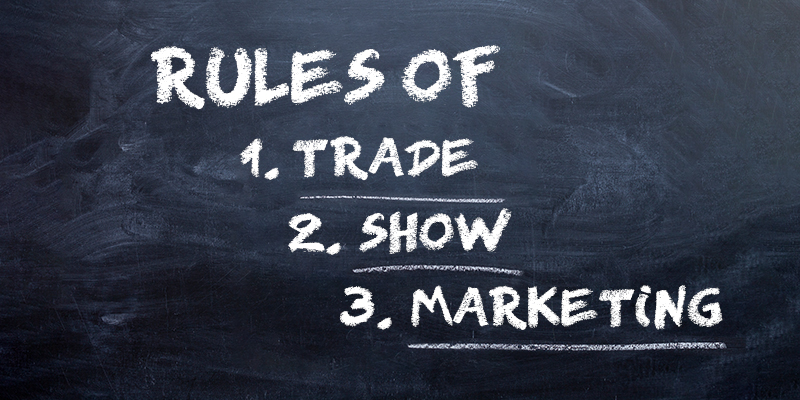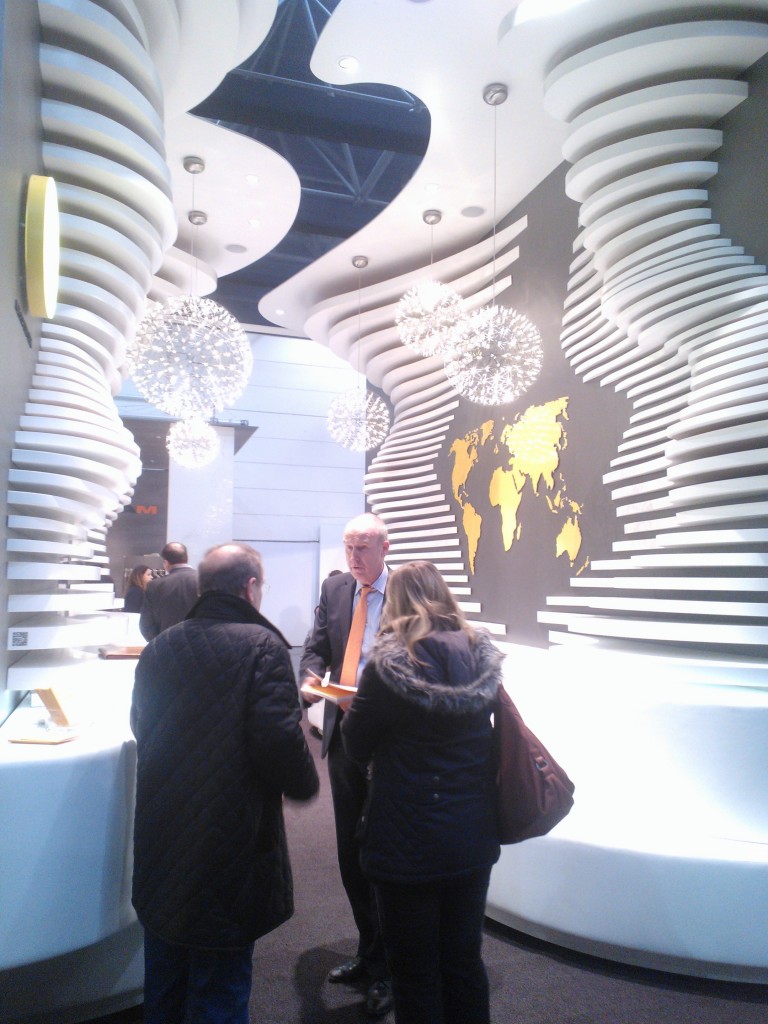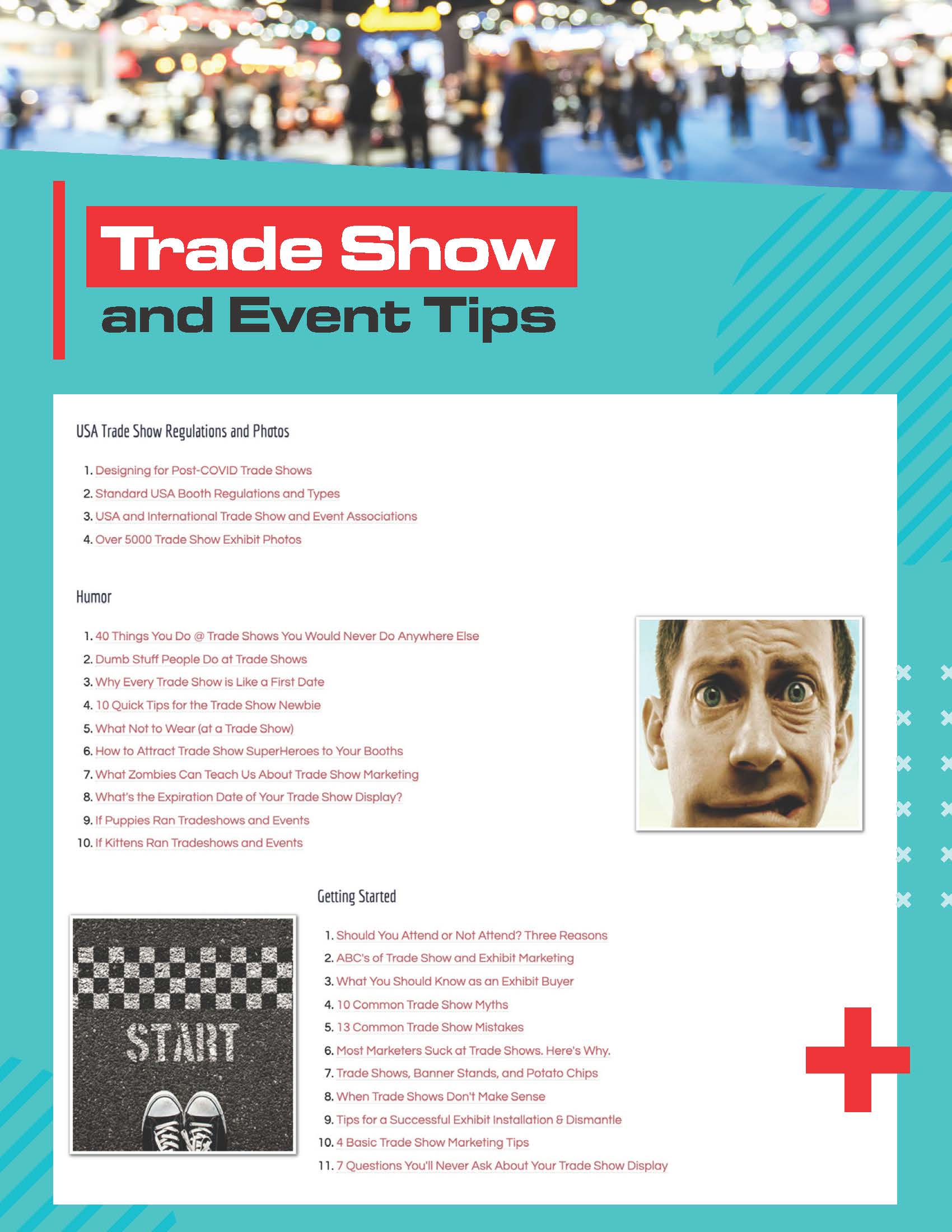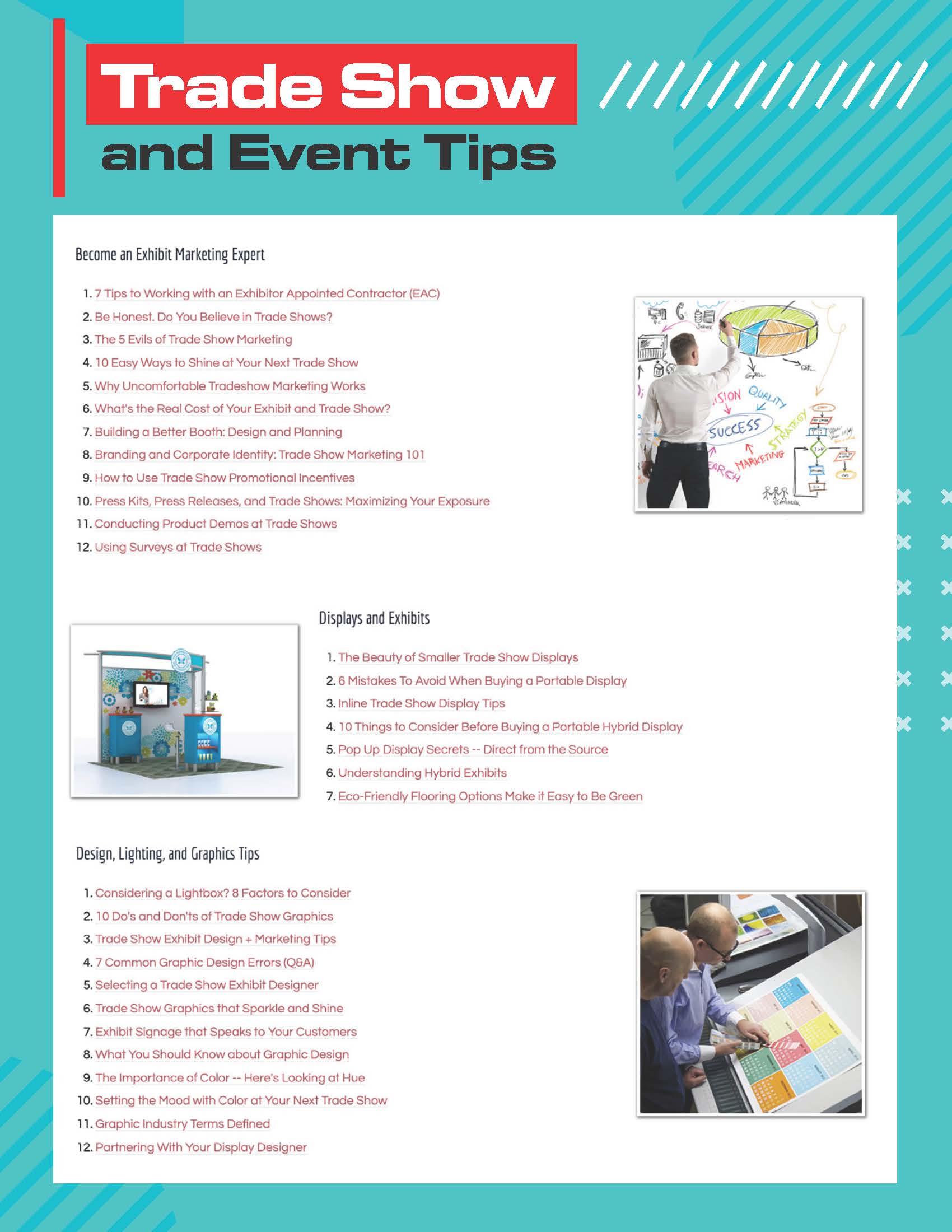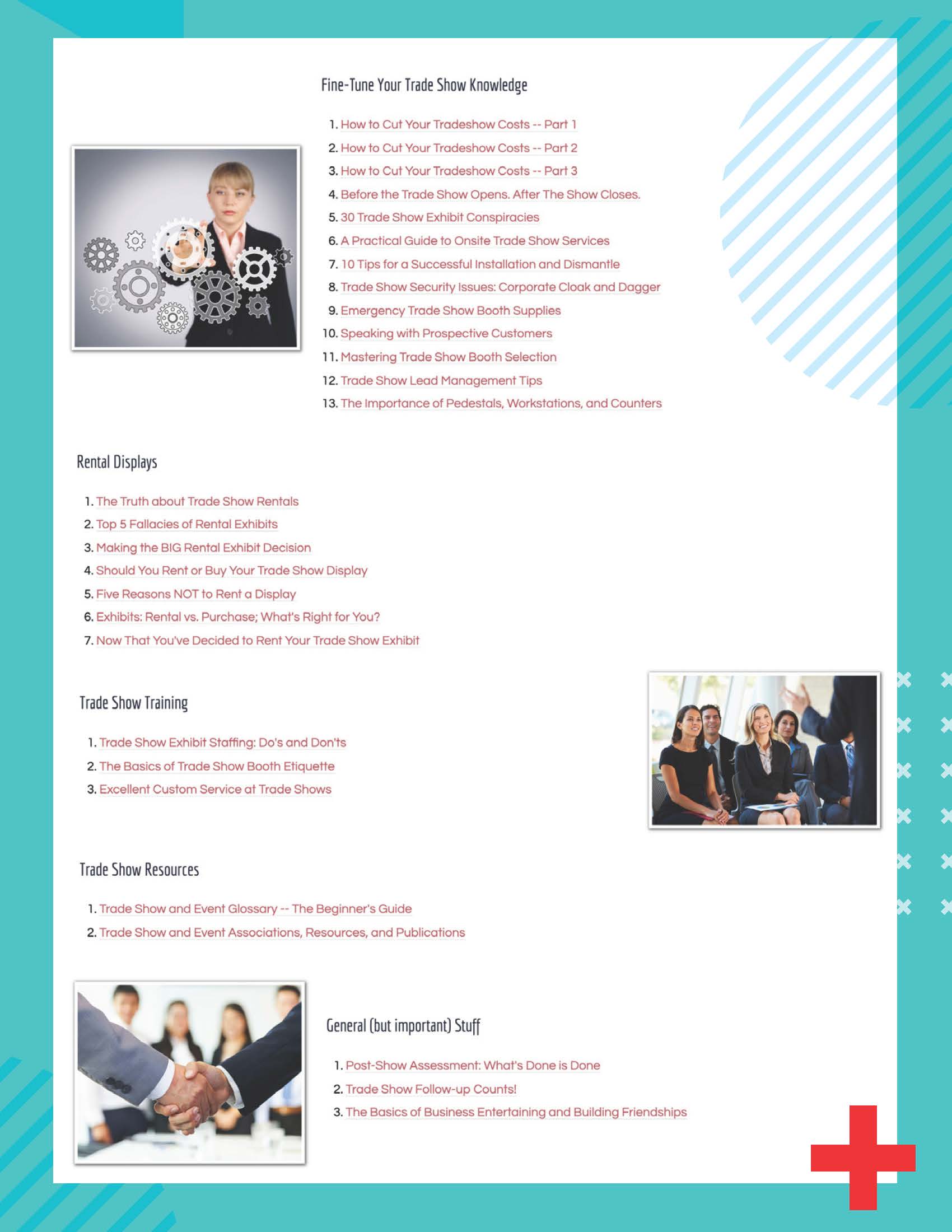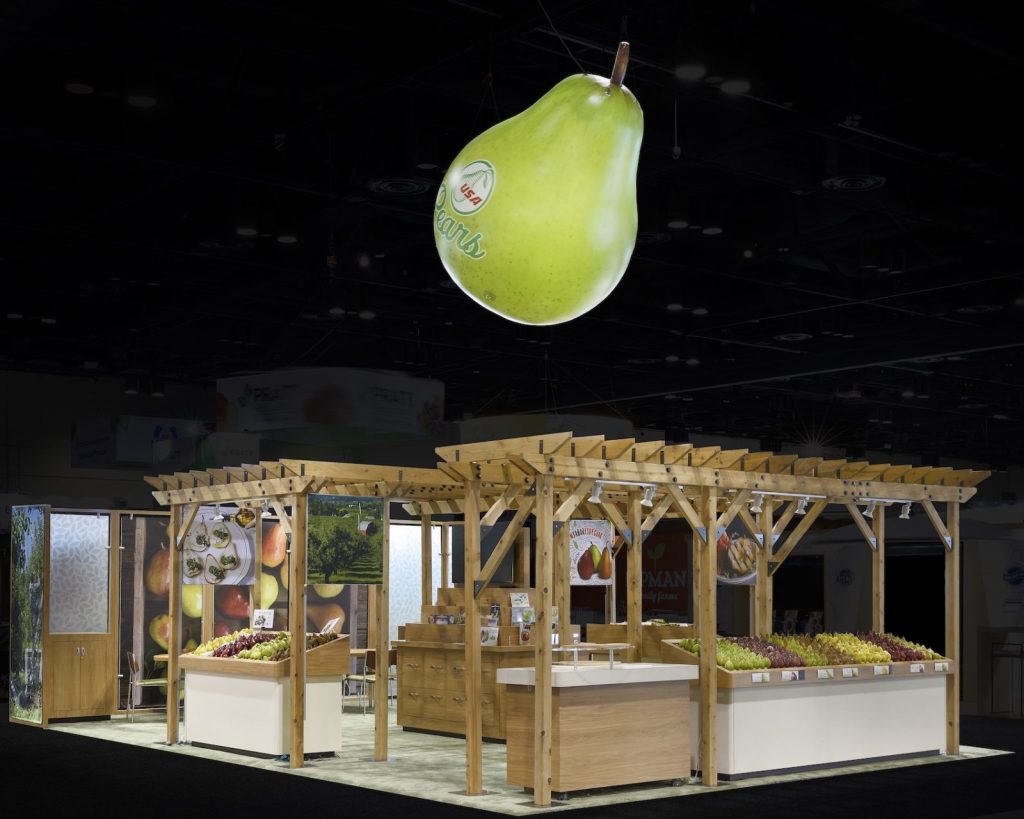
BBQ is BBQ, right? Not if you’re from Carolina, or Memphis, or Texas, or Kansas City, or 50 other locations in the United States. Each region has their unique take not only on the sauce but also on the meat and preparation. The same could be said for exhibit marketing at different types of events like trade shows, conventions, conferences, or private events. No two audiences are the same, and how marketers interact with potential clients has a distinct rhythm and process.
Mastering Marketing for Different Types of Events
At some point, you’ve heard the following terms, often used interchangeably:
- Trade Shows
- Conventions
- Exhibitions
- Expos
- Symposiums
- Events
- Webinars
Each represents a gathering of individuals or groups with a shared interest or professional connection. But there are subtle differences. For example, trade shows (also called trade fairs) frequently are large multi-company events where exhibitors compete to attract attendees on a floor packed with hundreds of other exhibitors. Conversely, conventions tend to be more education and meeting-focused with a smaller trade show component.
A targeted marketing approach will depend not only on your products and services but also on the audience and types the events. In other words, it requires a plan specific to that show, expo, convention, or symposium.
Types of Events & Marketing
If you’re a marketing professional, you already know how to identify your objectives, your audience, the medium (event, expo, etc.), and your intended outcome. The hardest part, especially if you’re new to face-to-face marketing, is understanding how to deliver your message efficiently and effectively at these types of events.
Start by contacting the show organizer or association. Ask for guidance. They are motivated to help you for 3 reasons:
- They want their event to be successful
- They want participants to view the event as valuable.
- They want to make money.
Don’t be shy about tapping into their expertise. They know their customers and have years of experience. All too often, marketers will assume a successful promotion at one event will translate into an equally successful promotion at another event. Or a sponsorship will carry the same prestige and access to potential clients at all types of events.
For example, at a symposium, a breakfast sponsorship may be a HUGE opportunity since it attracts the largest crowd and often features a keynote speaker. A convention, however, may have a strong education focus with classes, training, and certification seminars. Teaching classes brings credibility to your company, along with one-to-one interaction with potential clients.
Finally, don’t be afraid to ask colleagues who have attended the event before for their advice. Nothing beats the advice from someone who has experienced the event in person.
Strategies for Experiential Event Marketing
Experiential event marketing, also known as engagement marketing, live marketing, or event marketing, is a way for brands to connect with their target audience through immersive, interactive experiences. Instead of traditional marketing methods like ads or commercials, it focuses on creating memorable, hands-on activities that build emotional connections between the brand and the consumer.
Instead of telling people how great your products or services are, you let them experience it firsthand.
Key Points about Experiential Event Marketing:
- Focus on Engagement: It’s all about getting people actively involved with the brand, not passively receiving information. This can involve workshops, games, demonstrations, product testing, or unique installations.
- Emotional Connection: The goal is to create a positive and memorable experience that fosters loyalty and builds brand affinity.
- Tailored to the Audience: Successful campaigns are designed specifically for the target demographic, considering their interests, preferences, and challenges.
- Not Limited to Events: While often used for events, experiential marketing can also be implemented in pop-up shops, in-store activations, or other interactive experiences.
Benefits of Using Experiential Event Marketing:
- Increased Brand Awareness: A unique and engaging experience generates buzz and gets people talking about your brand.
- More Engagement: People are more likely to remember and be impacted by an experience than a traditional ad.
- Stronger Brand Connections: Positive experiences create emotional bonds with the brand, leading to loyalty and advocacy.
- Better Lead Generation: Events can be a great way to capture leads and collect valuable customer data.
- Higher Sales: By showcasing your product or service in action, you can convince people to buy.
Examples of Experiential Event Marketing:
- A pop-up shop where people can test out new products and interact with the brand.
- A VR experience that allows people to explore a new destination.
- A cooking class hosted by a food brand.
- A music festival sponsored by a clothing company.
If you’re looking for a creative and effective way to connect with your target audience, experiential event marketing could be a great option. Just remember to keep your audience in mind and create an experience that is truly memorable and engaging.
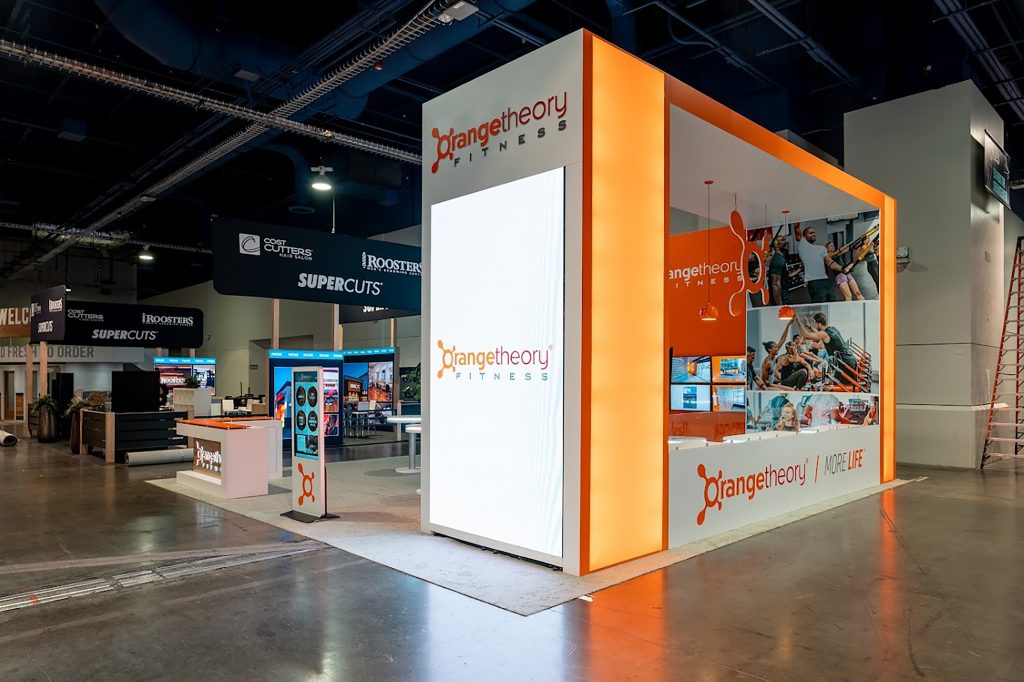
Creative Trade Show Marketing Ideas
Trade shows are an excellent opportunity to be seen and make a lasting impression on potential clients. Here are some creative trade show marketing ideas to spark your imagination:
Pre-Show Buzz:
- Run Pre-show Contests or Giveaways: Offer exclusive early access or discounts to generate interest and attract attendees to your booth.
- Host a Virtual Event or Q&A: Use social media or webinars to answer questions, showcase your product, and build anticipation for the trade show.
- Partner with Another Company: Collaborate with a complementary brand to share booth space, resources, and reach a wider audience.
Interactive Exhibit Design:
- Create a Unique and Engaging Visual Experience: Go beyond the standard banners and backdrops. Use lighting, props, or even AR/VR to create a memorable atmosphere.
- Offer Interactive Product Demos: Let attendees test your product themselves, rather than just watching a presentation.
- Include Games or Challenges: Gamify your booth with contests, quizzes, or activities that encourage participation and lead generation.
- Design a Comfortable and Inviting Space: Provide seating, charging stations, or refreshments to make visitors feel welcome and linger longer.
Social Media Integration:
- Run a Booth Hashtag Contest: Encourage attendees to share photos and videos using your hashtag for a chance to win prizes.
- Live Stream Demos or Interviews: Let people who can’t attend the show experience your presence virtually.
- Offer Social Media-specific Giveaways: Reward attendees who follow your accounts or tag friends in posts at your booth.
Experiential Activities:
- Host a Workshop or mini-seminar: Share your expertise and provide valuable insights to attract and engage attendees.
- Offer Product Customizations or Personalization: Show the benefits of your product by tailoring it to individual needs.
- Organize a Charity Initiative: Give back to the community and associate your brand with a positive cause.
- Partner with an Influencer: Invite a relevant influencer to your booth for meet-and-greets or product demonstrations.
Remember:
- Target your Audience: Tailor your activities and giveaways to the specific interests and needs of your ideal customer.
- Have Fun and Be Yourself: Let your brand personality shine through to create a genuine and memorable experience.
By thinking outside the box and adding a touch of creativity, you can make your trade show marketing leave a lasting impression on potential clients.
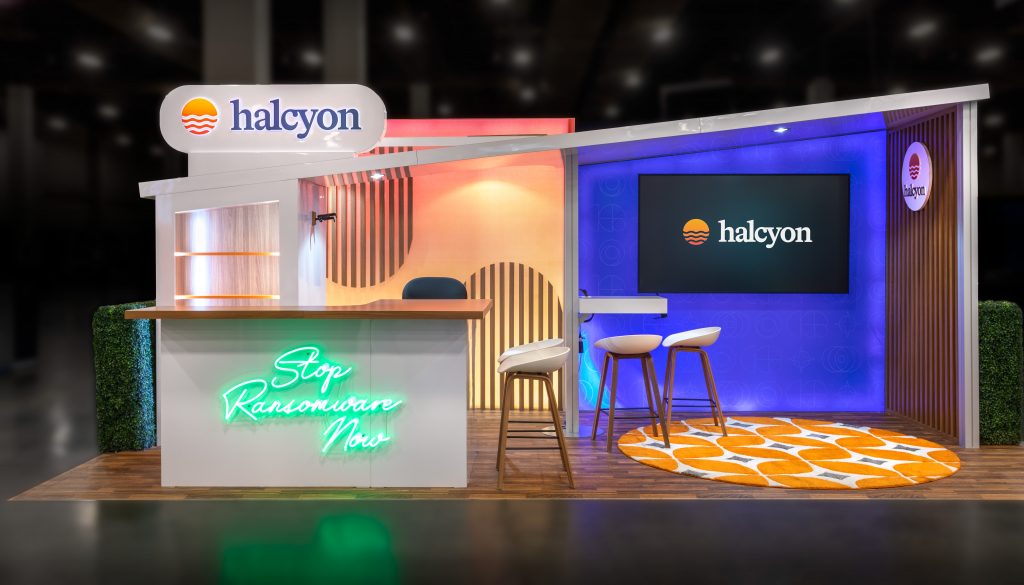
Crafting Effective Convention Marketing Campaigns
You may be wondering, “What’s the difference between a convention vs. a trade show?” Conventions and trade shows share similarities, but there are key differences in their aims, audiences, and activities:
Purpose: Conventions typically focus on community building, networking, and professional development within a specific industry, organization, or interest group. They involve educational sessions, workshops, guest speakers, and social events. Trade shows are more about promoting products and services.
Audience: Conventions attract members of a specific community or industry, often with shared interests and goals. Attendees might be professionals, enthusiasts, or hobbyists. Trade show attendees are primarily interested in making informed purchasing decisions.
Activities: Conventions offer a wider range of activities besides product demonstrations, including keynote speeches, educational sessions, workshops, networking events, social gatherings, and awards ceremonies. Trade shows may include similar activities but are usually secondary to product demonstrations. Sales meetings, and lead activations.
Effective convention marketing strategies require a multi-pronged approach that targets both pre-event excitement and on-site engagement. Here are some key areas to focus on:
7 Convention Marketing Strategies:
1. Define Your Target Audience: Understanding who you want to attract is crucial. Consider demographics, interests, and pain points to tailor your message and channels.
2. Create a Compelling Brand Story: Go beyond features and benefits. Highlight the value proposition, uniqueness, and impact your convention offers.
3. Leverage Digital Marketing: Utilize various channels like:
- Website: Optimize it for relevant keywords, showcase speakers and programs, offer early bird discounts.
- Social Media: Engage with potential attendees, share updates, run contests, use relevant hashtags.
- Email Marketing: Build an email list, send targeted campaigns with valuable content, and offer exclusive deals.
- Paid Advertising: Consider targeting ads on platforms like LinkedIn or industry publications.
4. Partner with Influencers and convention management: Collaborate with industry experts, show organizers, or relevant personalities to promote your convention to their audience.
5. Public Relations: Issue press releases, pitch stories to relevant media outlets, and participate in industry podcasts or interviews.
6. Offer Valuable Experiences: Host workshops, demonstrations, product showcases, or networking events to provide attendees with actionable knowledge and connections.
7. Networking Opportunities: Facilitate networking events, receptions, or designated spaces for attendees to connect and build relationships.
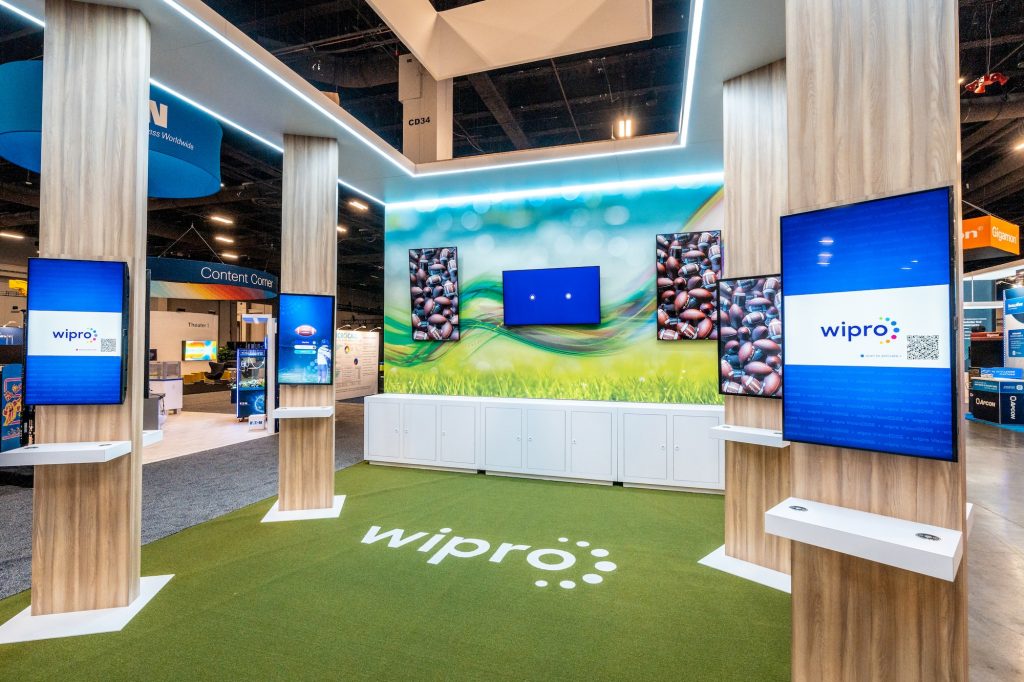
Conference Marketing: Networking and Engagement
Conferences play a crucial role in facilitating knowledge sharing, professional development, and fostering connections within specific communities. It typically focuses on a specific topic or theme, bringing together attendees to share knowledge, ideas, and experiences. To be successful at conference marketing, you need to understand the key characteristics of a conference and how it differs from similar events.
Key Characteristics of Conferences:
Formal Setting: Conferences are usually formal events with planned schedules, presentations, and activities.
Specific Theme or Topic: They revolve around a central theme or area of interest, attracting attendees with shared knowledge or passion for that subject.
Learning and Discussion: The primary goal is to share information, exchange ideas, and spark discussions among attendees.
Networking Opportunities: They offer dedicated time and space for attendees to connect, build relationships, and foster collaboration.
Varied Formats: Conferences can range in size and duration, from small one-day events to large multi-day gatherings. They often incorporate presentations, workshops, panels, exhibitions, and social events.
Compared to Other Types of Events:
Trade Shows: Primarily focused on businesses showcasing products and services to potential buyers, with less emphasis on community building and learning.
Conventions: Often cater to larger communities within an industry or organization, offering broader programs and social activities beyond product demonstrations.
Seminars: Smaller, more focused events usually centered on a single topic or skill development, with lectures and workshops as the primary format.
Conference marketing strategies encompass both pre-event and on-site efforts to attract attendees, generate buzz, and create a successful experience.
Here are Some Key Strategies to Consider:
Target Audience:
- Define your Ideal Attendee: Understanding demographics, interests, and pain points helps tailor your message and channels.
- Segment your Audience: Group attendees based on interests to personalize communication and offers.
Building Excitement:
- Compelling Brand Story: Highlight the value proposition, uniqueness, and impact your conference offers.
- Digital Marketing: Leverage websites, social media (relevant hashtags, contests), email marketing, and paid advertising.
- Influencer Partnerships: Collaborate with industry experts or relevant personalities to promote your conference.
- Public Relations: Issue press releases, pitch stories to media outlets, and participate in industry podcasts or interviews.
Engaging Experience:
- Interactive Booths: Design an eye-catching space with activities, product demos, and networking opportunities.
- Valuable Sessions: Offer workshops, panels, and presentations catering to diverse interests and needs.
- Technology Integration: Enhance engagement with AR/VR, gamification, interactive presentations, etc.
- Networking Events: Facilitate opportunities for attendees to connect and build relationships.
Lead Generation & Retention:
- Data Collection: Capture leads through registration forms, contests, or interactive activities.
- Social Media Advocacy: Encourage attendee content sharing using a unique hashtag.
- Personalized Post-event Communication: Follow up with attendees and offer relevant content or opportunities.
Ultimately, conferences play a crucial role in facilitating knowledge sharing, professional development, and fostering connections within specific communities.

Discover Our Exhibit Marketing Services!
For 30 years, Classic Exhibits has been a leader in the exhibit industry, designing and building exhibits and sharing our knowledge of exhibit marketing with our Distributor Partners and their clients. As North America’s largest private-label exhibit manufacturer, we have the unmatched capability, capacity, and creativity to create 3D projects ranging from 10 x 10 inline displays to 60 x 80 double-deck islands.
Find success on the trade show floor with an exhibit that reflects your marketing message. For more information, see www.classicexhibits.com and explore Exhibit Design Search or request a meeting with a Classic Distributor Partner.


